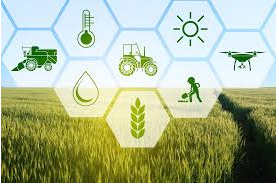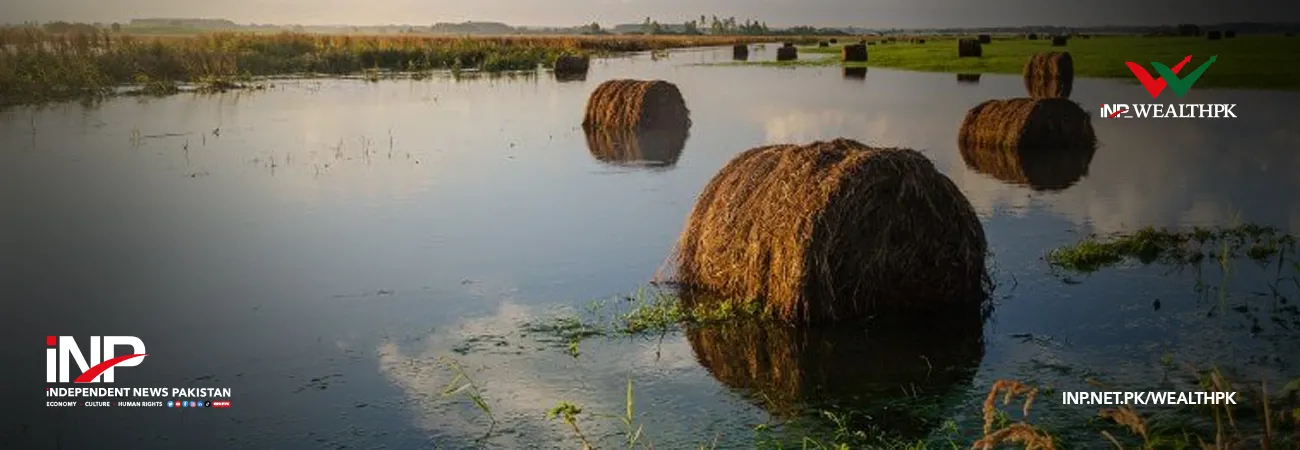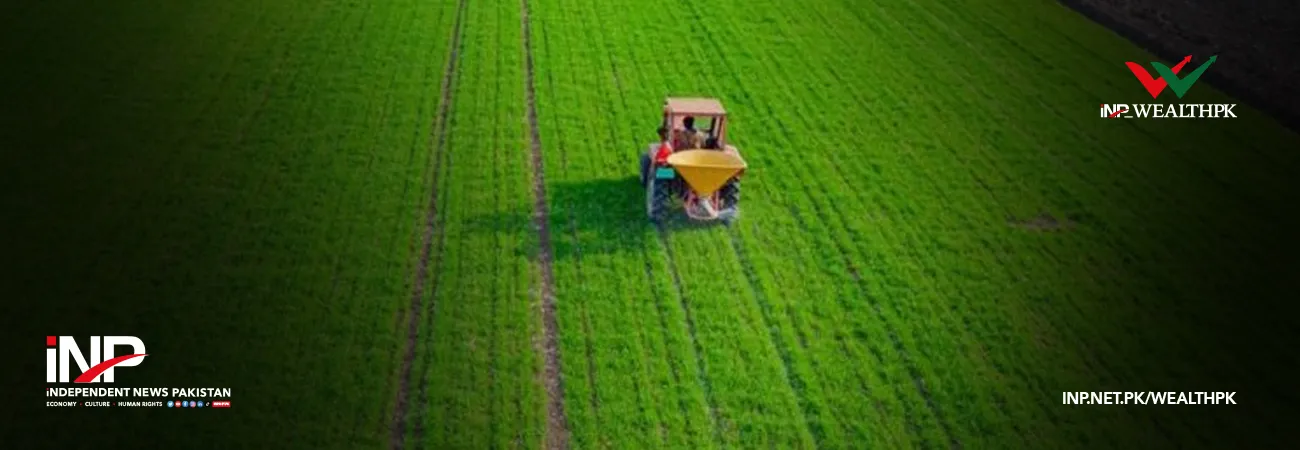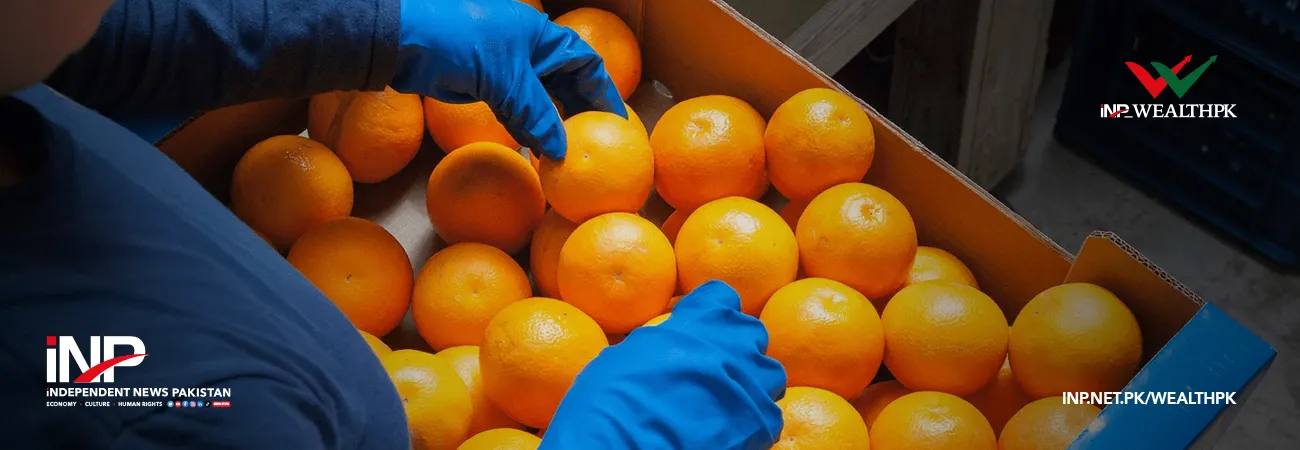INP-WealthPk
Abdul Ghani
Pakistan’s agriculture sector, traditionally the backbone of the economy, is grappling with severe climate shocks while showing remarkable resilience through rising demand for credit, fertilizer, and machinery. The Monthly Economic Update & Outlook – September 2025 issued by the Finance Division notes that while floods since July 2025 have damaged crops and livestock across large areas, financing and input indicators for agriculture remain on an upward trajectory.

The report reveals that agricultural credit disbursement during the first two months of FY2026 (July–August) surged by 19.5 percent to Rs.404.2 billion compared to Rs.338.2 billion in the same period of FY2025. This growth comes despite a nationwide climate emergency declared by the government to address the escalating impact of the floods, which have disrupted farming activities in several provinces.
Notably, imports of agricultural machinery and implements registered a sharp rise of 66.7 percent, reaching $29.4 million in July–August FY2026 compared to $17.6 million in the same period last year. According to analysts, this increase reflects farmers’ effort to mechanize operations, compensate for labor shortages, and adopt climate-resilient practices that can improve productivity under difficult conditions.
Fertilizer consumption also stayed strong despite crop losses. During Kharif 2025 (April–August), urea offtake was recorded at 2,676 thousand tonnes, showing an increase of 12.4 percent compared to Kharif 2024. Similarly, DAP (Di-Ammonium Phosphate) offtake stood at 552 thousand tonnes, up 8.7 percent from the previous year. The increase indicates that even in flood-affected years, demand for nutrients to restore soil health and support replanting remains robust.
The report underscores that the government is actively assessing the damage to crops and livestock. While the full impact is yet to be quantified, early signs suggest significant losses. However, the continued rise in financing and fertilizer uptake highlights the determination of farmers and suppliers to keep agricultural activity moving forward.
“The surge in agri-credit and input use reflects the resilience of Pakistan’s farmers,” the report notes, adding that government support measures and rehabilitation programs will remain critical in preventing a long-term decline in agricultural productivity.
Agriculture remains the single largest employer in Pakistan and contributes around one-fifth of GDP. As such, sustaining farmer access to financing, ensuring timely input availability, and rebuilding flood-hit areas will be essential not only for rural livelihoods but also for food security and price stability nationwide.
The Finance Division concludes that the agriculture sector’s resilience—visible in rising credit, machinery imports, and fertilizer demand—provides a silver lining at a time of widespread climate distress, and offers a foundation upon which recovery efforts can build in the coming months.
Credit: INP-WealthPk













